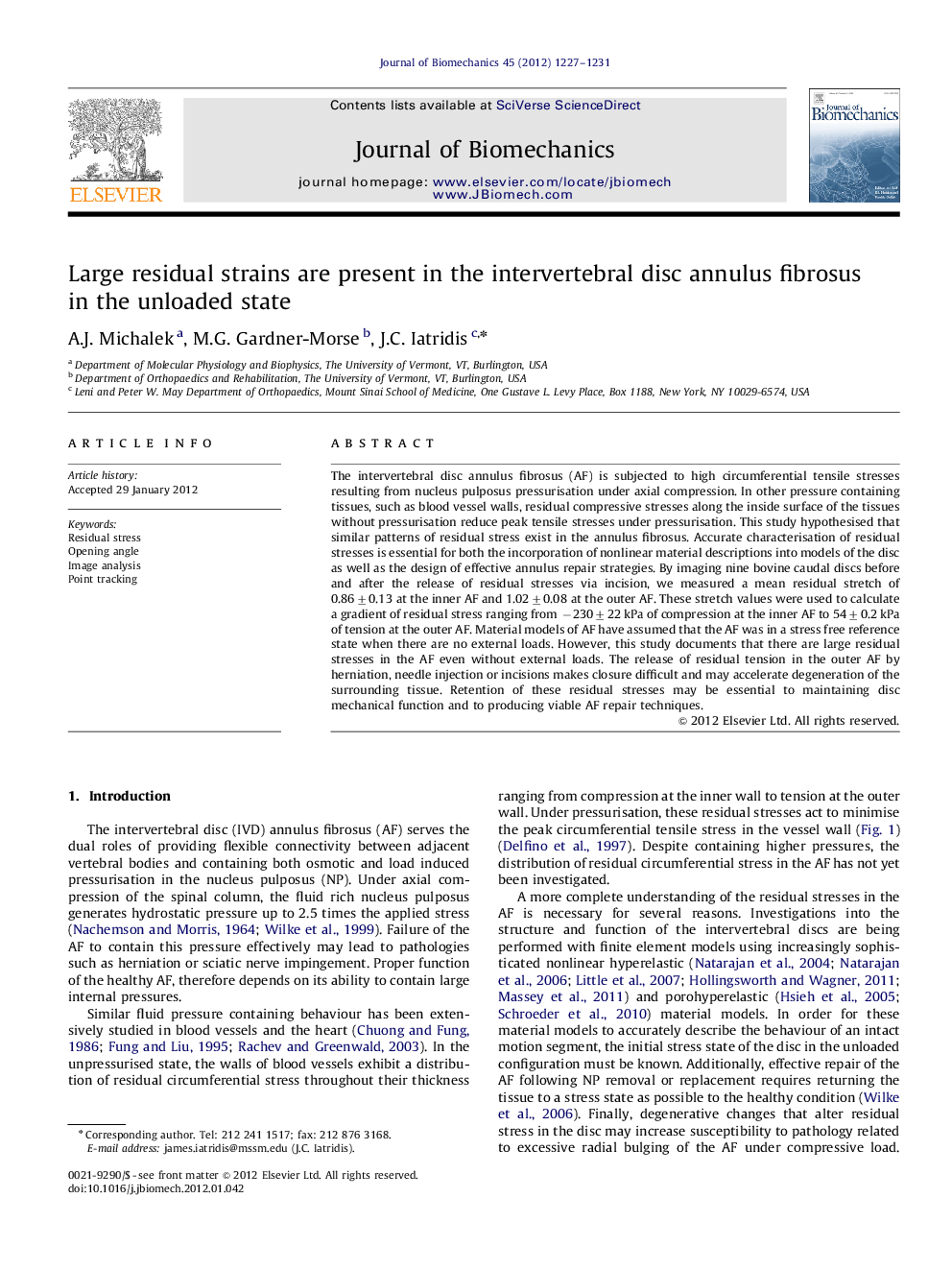| Article ID | Journal | Published Year | Pages | File Type |
|---|---|---|---|---|
| 872666 | Journal of Biomechanics | 2012 | 5 Pages |
The intervertebral disc annulus fibrosus (AF) is subjected to high circumferential tensile stresses resulting from nucleus pulposus pressurisation under axial compression. In other pressure containing tissues, such as blood vessel walls, residual compressive stresses along the inside surface of the tissues without pressurisation reduce peak tensile stresses under pressurisation. This study hypothesised that similar patterns of residual stress exist in the annulus fibrosus. Accurate characterisation of residual stresses is essential for both the incorporation of nonlinear material descriptions into models of the disc as well as the design of effective annulus repair strategies. By imaging nine bovine caudal discs before and after the release of residual stresses via incision, we measured a mean residual stretch of 0.86±0.13 at the inner AF and 1.02±0.08 at the outer AF. These stretch values were used to calculate a gradient of residual stress ranging from −230±22 kPa of compression at the inner AF to 54±0.2 kPa of tension at the outer AF. Material models of AF have assumed that the AF was in a stress free reference state when there are no external loads. However, this study documents that there are large residual stresses in the AF even without external loads. The release of residual tension in the outer AF by herniation, needle injection or incisions makes closure difficult and may accelerate degeneration of the surrounding tissue. Retention of these residual stresses may be essential to maintaining disc mechanical function and to producing viable AF repair techniques.
